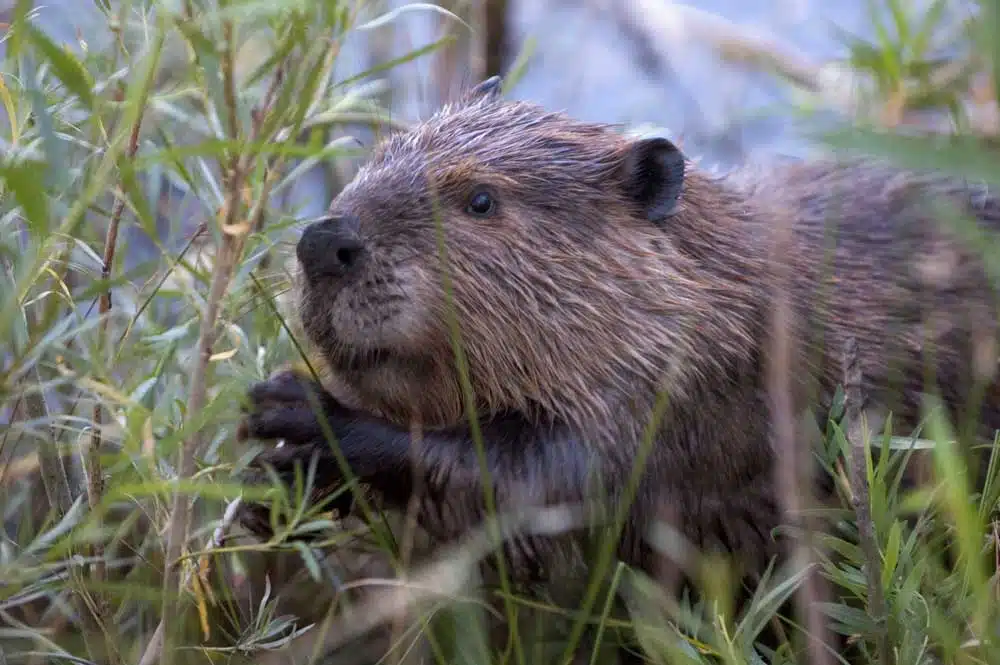Do you want to learn more about the Beaver? Jump to any section or read the entire article about the beaver.
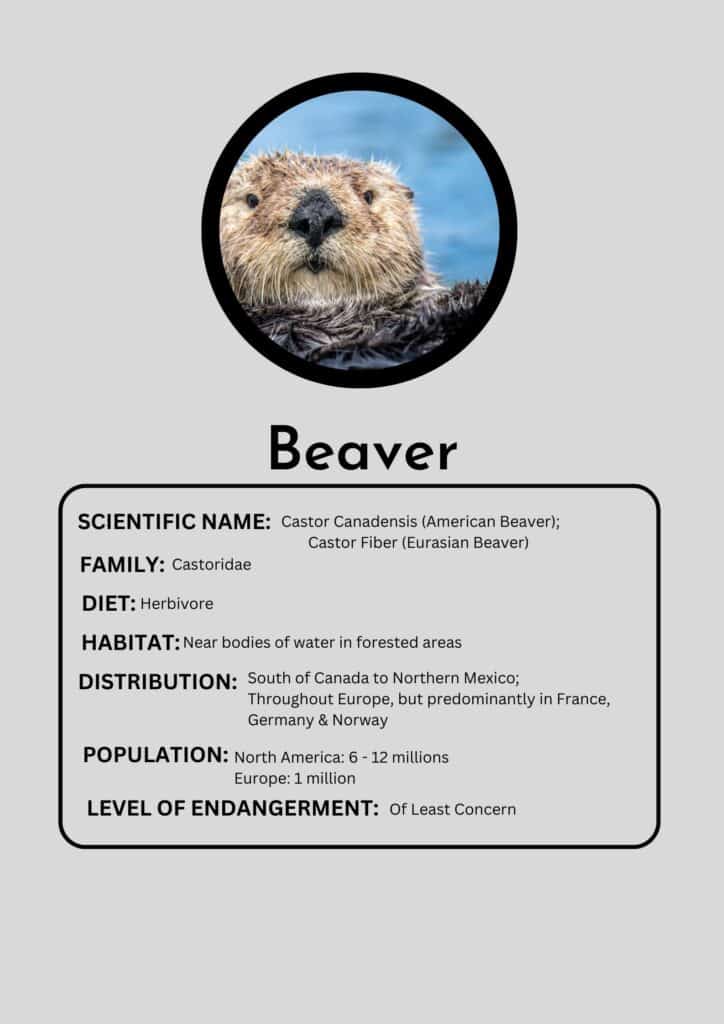
Jump to any section below:
Appearance
The beaver belongs to the Castoridae family which forms part of the Rodentia order, meaning that they’re cousins with porcupines, guinea pigs, and squirrels. There are two different types: the North American beaver (Castor Canadensis) and the Eurasian beaver (Castor Fiber). They constitute the second largest rodent on the planet and are semiaquatic animals.
A fully grown beaver measures 31-47 inches in length, excluding their tail, and weighs 24-66 pounds. That being said, they never entirely stop growing, and the biggest beavers can pass the 110-pound mark. Their fur coat is a reddish-brown color, which they typically shed once a year.
In order to assist with swimming, ng their hind feet are webbed, allowing them to reach a pace of 5 mph in water. Meanwhile, their front feet are highly dexterous, which enables to carry objects, find food and build structures skilfully. Dives typically only last for 30 seconds, but necessary to be they can hold their breath for 30 minutes.
Most of us are familiar with the beaver’s appearance due to its distinctive tail. The tail is large and flat with a scaly touch, usually measuring 18 inches in length and 5 inches in width. It is shaped like a paddle and acts like a rudder when the beaver swims. Additionally, the tail provides support when standing on its hind eggs and functions as a fat reserve during cold winters. Moreover, the bottom allows them to lose or retain heat. The beaver’s tail is imperative for their survival.
Another defining feature is their huge incisors, which along with impressive chewing muscles, allow them to chew throughardwoodod. Their lips close behind their incisors to prevent water from r entering their mouth and lungs, allowing them to carry and cut branches underwater.
Habitat and Distribution
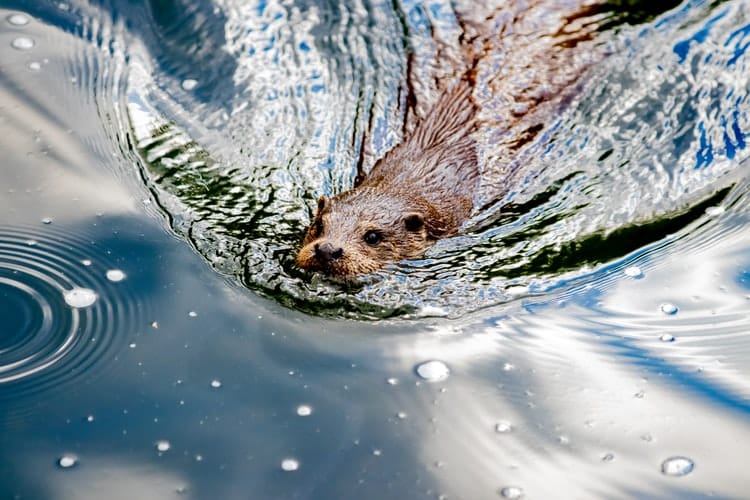
The beaver features on the IUCN Red List, which enlists endangered animals, but luckily they are deemed to be of least concern.
The North American beaver inhabits forested regions of the U.S. and Canada, sometimes occurring in Northern Mexico. The beaver population significantly decreased during the the1900ss following excessive hunting due to its desirable and luxurious fur. Although they risked extinction at one stage, conservation measures ensured their numbers became relatively stable again towards the end of the 20th century,y; measuring 6-1 million.
Similarly, the Eurasian beaver was prevalent throughout the continent before falling victim to their trade. Their population shrunk to 1,200 individuals, only existing in a select few regions in France, Germa,ny and Norway as in thU.S..S conservationists’ efforts succeeded,l and their population measured over a million beavers in 2020.
Being semi-aquatic animals, beavers reside near bodies of water such as streams, rivers,s, and lakes. They prefer the surrounding area to be forested so that they can collect wood and branches needed for construction. Beavers build “beaver lodges,” which typically house up to 8 beavers and measure 10 feet in height and 20 feet across. These impressive lodges protect them both from harsh climates and various predators.
Nocturnal animals will spend most of the day in their lodges. Even though they do not hibernate during winter, they can remain inside their houses for more than 24 hours.
Their architectural skills have granted them the title of “ecosystem engineer.” Other than humans,s of course, no other species has such a profound effect on their surroundings. The presence of beavers generally improves an area’s biodiversity and water quality.
Also don’t miss our Manatee Article.
Diet
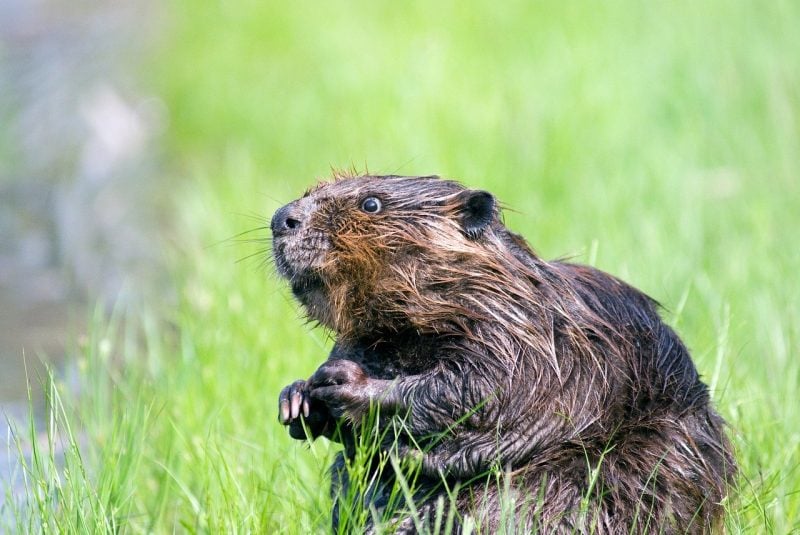
Beavers follow a herbivorous diet and are not very fussy eaters. During summer, their diet is more herbaceous, consisting of ferns, aquatic plants, fruit, leaves, es, and roots. In winter, they adjust their diet to what’s available during colder times. This includes various wood and bar, with aspen twigs being their favorite, but they will also consume birch, will,w, and oak, among others. Some beavers will hoard food underwater in their beaver lodges to prepare for winter.
Mating and Life Cycle
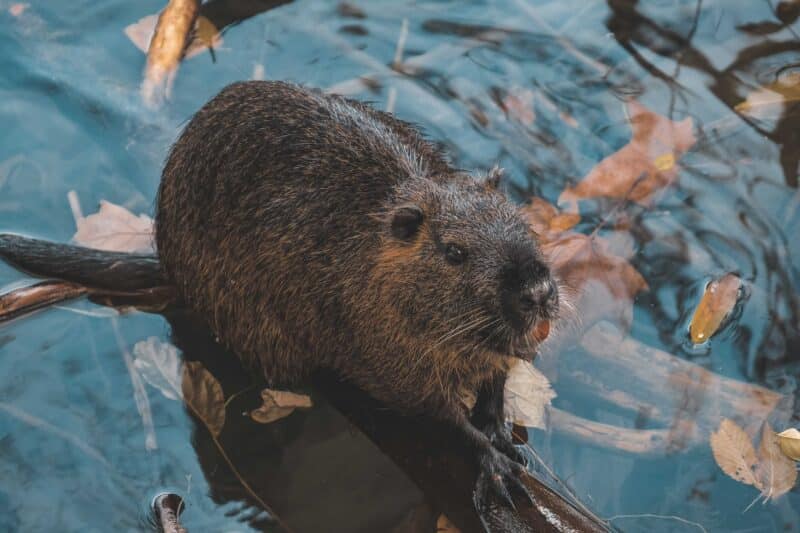
Beavers are monogamous creatures, sometimes retaining the same partner their whole lives. The mating season varies depending on geographical location, but their offspring are usually born in spring, after a gestation period of 105 days. A beaver litter contains 1-9 babies, called kits.
Fun Fact: We Bet You Didn’t Know
#1 Beavehasve orange teeth.
#2 Beavers eat wood.
#3 Beavers are giant rodents in North America.
#4 Beavers use their tails to show danger.
We hope you enjoyed reading about Beavers and learning about this beautiful animal. If you want to know mo, look ok at the Canadian marble fox or our other mammal articles.
- Magpie Bird Is Reunited with Her Dog Best Friend - April 24, 2024
- Dog Saves Another Dog From Drowning in Fish Pond - April 23, 2024
- Man On Motorbike Rescues Cat From Highway - April 23, 2024

